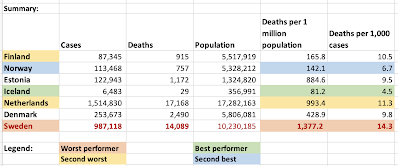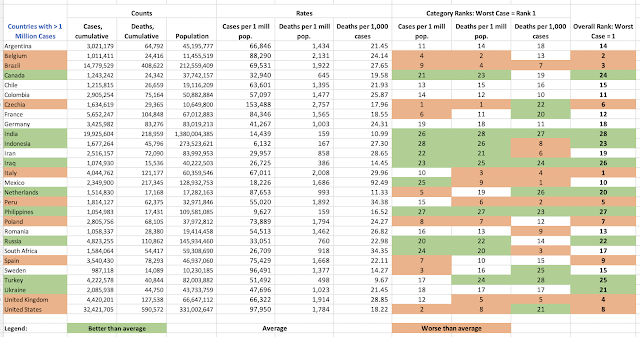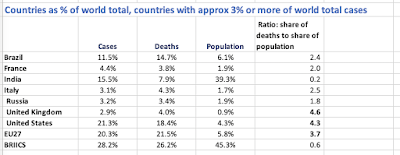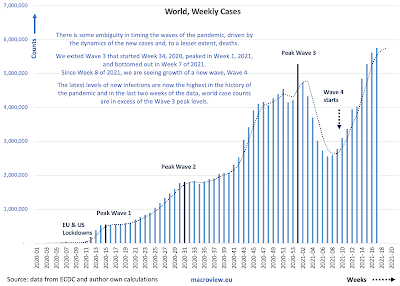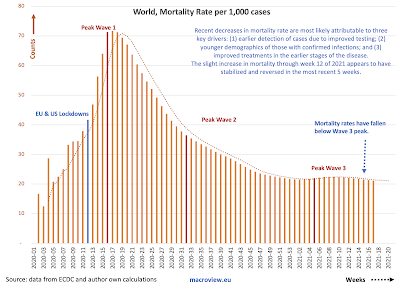April PMIs for BRIC economies show continued strengthening in the recovery in China and Russia, moderation in the recovery momentum in India and deepening collapse in the recovery in Brazil.
Since we are into the first month of the new quarter, there is not enough data to go about to meaningfully analyze quarterly dynamics. Hence, I am only looking at Composite PMIs:
PMIs in April run stronger, compared to 1Q 2021 averages for Russia (Services only), and China (Services and Manufacturing), while Brazil and India recorded deteriorating PMIs in both Manufacturing and Services, and Russia posted weaker Manufacturing PMI.
BRIC as a group underperformed Global PMIs in April in both Services and Manufacturing, although BRIC Services PMI in April was running ahead of Services PMI for 1Q 2021, and there was virtually no change in Manufacturing PMI for BRIC group in April compared to 1Q 2021 average.
Global Composite PMI in April was 56.3, which is much higher than same period Composite PMIs for Brazil (44.5), Russia (54.0), China (54.7) and India (55.4).
Notable price pressures were marked in:
- China: "At the same time, inflationary pressures remained strong, with input cost inflation hitting its highest since January 2017, while prices charges rose solidly".
- India: "Supply-chain constraints and a lack of available materials placed further upward pressure on inflation. Input prices facing private sector companies rose at the sharpest pace in close to nine years. The quicker increase was seen among goods producers. Prices charged by private sector firms increased at the fastest pace since last November, but the overall rate of inflation was modest and much weaker than that seen for input costs."
- Russia: "The rate of input cost inflation slowed in April to the softest for three months. That said, firms continued to pass on higher costs to their clients, as charges rose at the fastest pace since January 2019".
- Brazil: "Meanwhile, input costs continued to increase sharply. The rate of inflation was the second-fastest since composite data became available in March 2007, just behind that seen in the previous month. Goods producers noted a stronger rise than service providers for the fifteenth straight month. Prices charged for Brazilian goods and services rose further, stretching the current sequence of inflation to nine months. The upturn was sharp and the fastest in the series history. The acceleration reflected a quicker increase in the manufacturing industry".




